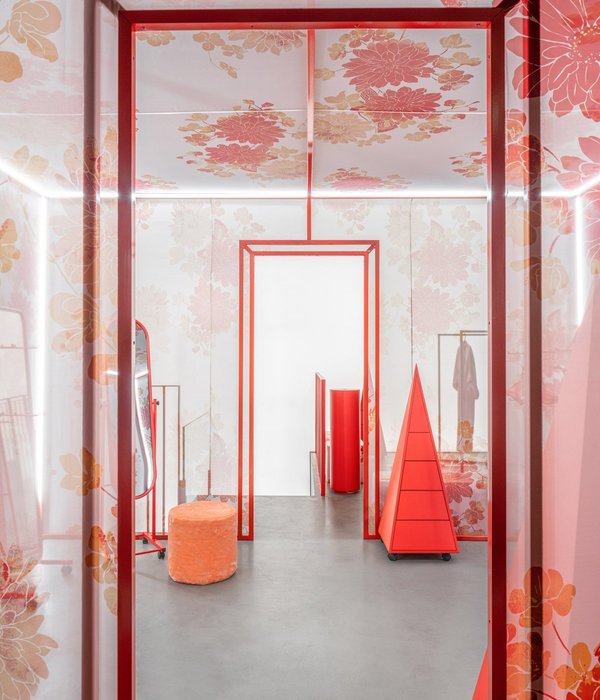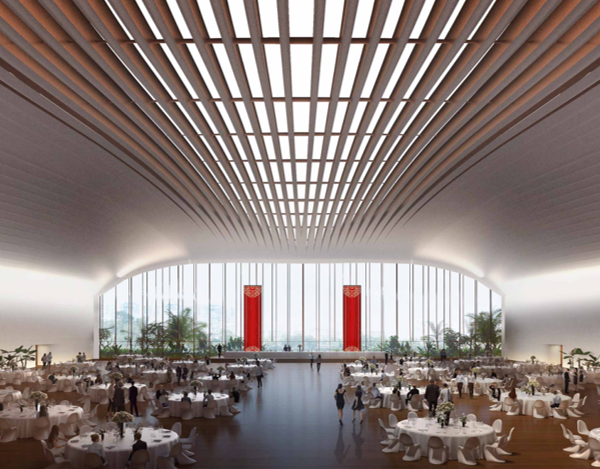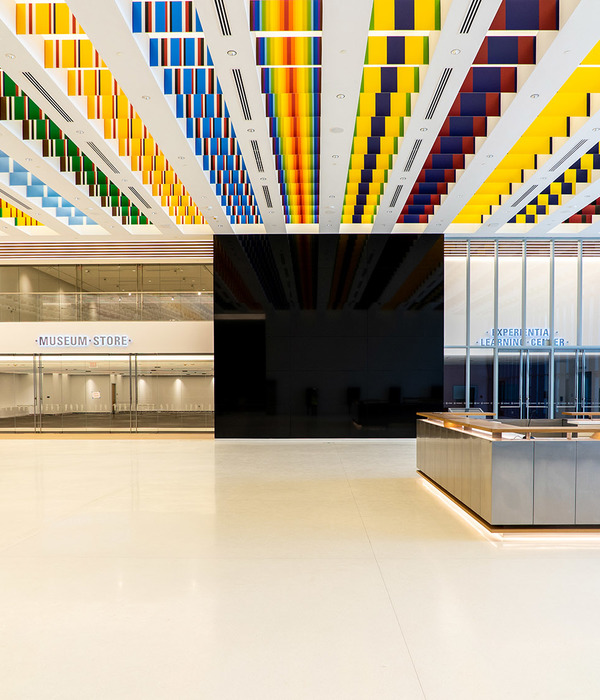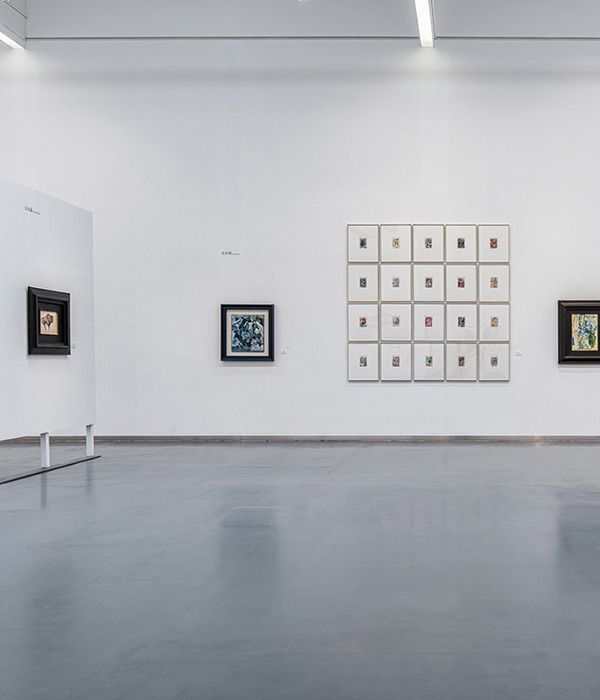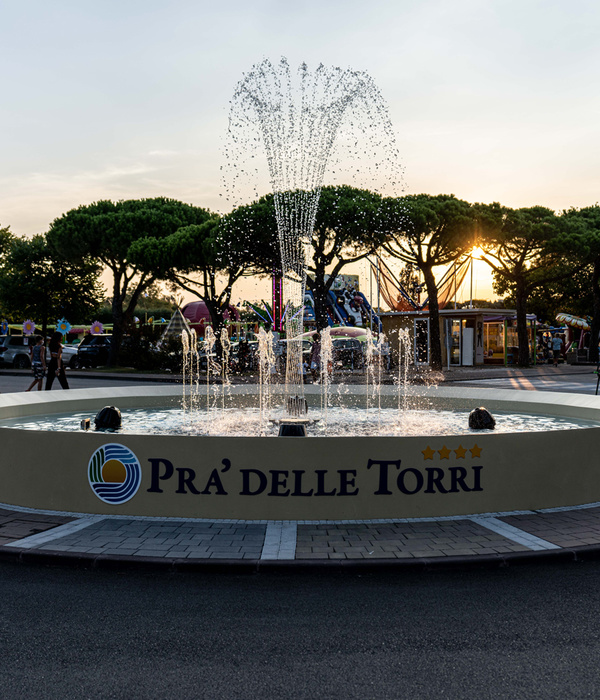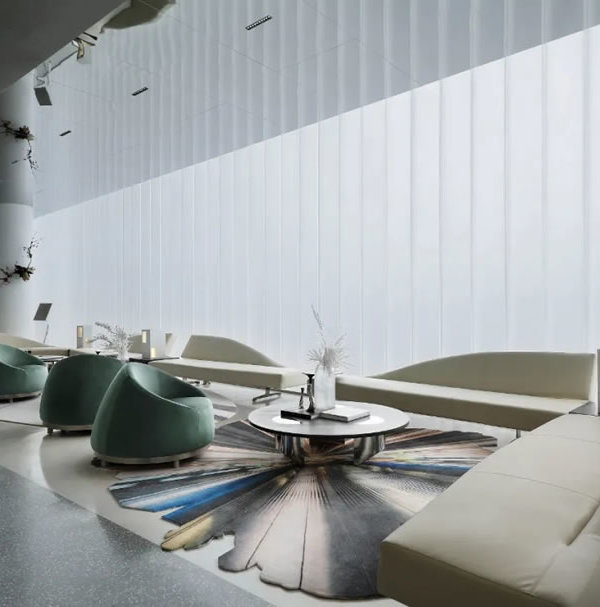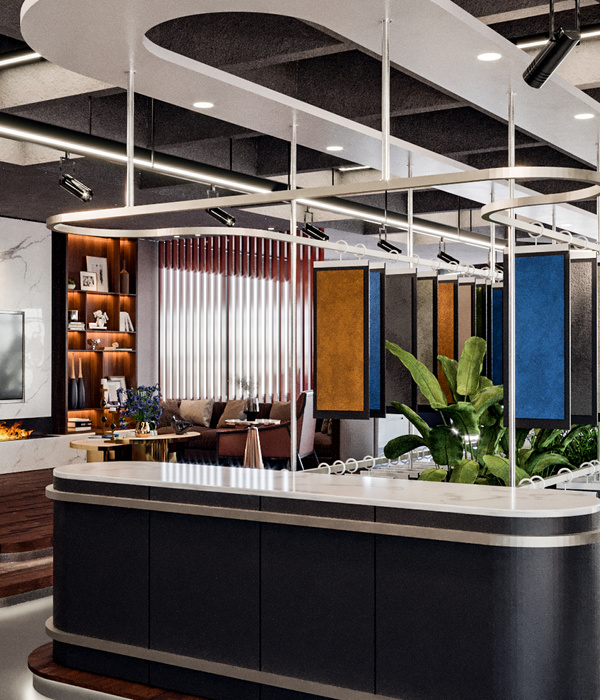项目坐落于荷兰首都阿姆斯特丹。近年来,随着大量的学生、企业家的到来,以及荷兰政府对自由艺术家的支持政策,位于城市近郊的居住区开始蓬勃发展,同时这种趋势也引领着阿姆斯特丹进入城市转型期。在很多情况下,这些综合住宅区是专门为学生、企业家以及艺术家等人群设计规划的。在规划的过程中,为社区引入文化中心是关键的一环,目的旨在增强居民之间的交流与互动,为居民营造富有凝聚力的社区环境。
Amsterdam is one of the European capitals that is most facing a period of urban transformation. The arrival of a large number of students, entrepreneurs and a policy that supports the artistic world, has led to the development of new residential complexes located in the suburban districts adjacent to the city center. These compounds, in many cases, are projected in order to provide specific services for these typologies of users. Moreover, a key factor in the planning process of these housing schemes is the introduction of cultural hubs where the sociality and interaction between the residents grows and creates connections. Among these, there is WOW Lieven, located in the student housing complex Lieven, still under construction, in the New-West area of Amsterdam.
▼项目概览,overall of the project © Peter Tijhuis
WOW LIEVEN文化创意中心共有两个楼层,建筑面200平方米,室内由建筑师Carlo Alberto Monteverde操刀设计。中心一层为充满活力的开放空间;二层则较为安静,设有员工办公区以及服务区。根据业主的要求,本项目核心理念旨在为艺术家和访客们创造一个独特会议空间,这里既可以成为工作场所,也可以作为展览中心以及社交场所使用。因此,建筑师以核心理念为切入点,对空间进行了最大程度上的精简,最终得到了这个布局灵活、用途广泛的开放式大空间,以满足不同使用者的需求。一层的开放空间被划分为三个主要区域,每个区域都可以通过鲜艳的色彩清晰地辨别出来。入口区域为蓝色,主要用于音乐会和展览;中央过渡区为黄色,设有吧台与公共办公桌;空间末端的餐饮区域则为红色。
The interior design project Of the WOW Lieven Cultural Hub has been realized by the architect Carlo Alberto Monteverde. The 200 square meter site is divided in 2 levels: the ground floor, intended as a dynamic and vibrant open space, and the first floor, a quieter area where are located offices and service rooms for the staff. The main concept raised from the request of the client to create a meeting space for artists and visitors, that could become a working spot, but also an exhibition center and a place for interactions. So, the idea takes shape as a crossing point, a space reduced to the essential, that could face several different uses in the time, in order to highlights the disparate expressions of the users. The open space area at the ground floor is divided in three main areas, recognizable by a distinguished chromatic variation: at the entrance is located the blue area, mainly for concert and exhibitions; at the center, instead, there is the yellow area, with a bar and a shared desk; at the end there is the red area that is principally concerned for dining.
▼入口蓝色区域设有小舞台与工作室,ENTRANCE – Blue Area for concerts and exhibition in front and Workshop on the side © Peter Tijhuis
▼中央黄色区域设有吧台与办公桌,yellow area with a bar and a shared desk © Peter Tijhuis
▼通透的开放空间,满足不同使用需求,Transparent open space to meet different use needs © Peter Tijhuis
▼红色餐饮区域,red area that is principally concerned for dining © Peter Tijhuis
一系列风格简洁的家具箱体分散在每个区域中央,这些箱体由胶合板构成,灵感源自运输艺术品的“安全箱”,根据其所在的区域以及使用方式的不同,每个箱体也具有不同的功能。开放空间的旁边设有工作室。工作室由木制框架以及胶合板围合而成,与楼梯融为一体,既安静又隐蔽,是展开教学或辩论的理想场所。箱体与工作室均采用了层压多孔板作为内侧饰面,使用者可以将艺术品或工作用具挂在多孔板上,这些空间也因此变身成为临时展览空间。
These divisions are composed of a series of simple plywood-finished open boxes, inspired by the “safe boxes” for the transportation of artworks, that assume different functions, depending on the events or the activities organized. Beside this space there is the workshop, located inside a wooden unfinished-look frame structure, thought as a silent and secluded space for educational and debate use. The inner finishing of the wooden boxes, as the workshop one, are composed of laminated perforated panels that could be customized by the users by hanging artworks for temporary exhibitions or working tools.
▼工作室与楼梯融为一体,The workshop blends in with the staircase © Peter Tijhuis
此外,建筑师Carlo Alberto Monteverde特别为WOW LIEVEN文化中心设计了一尊雕塑,放置在开放空间的中央。雕塑描绘了一个正在做梦的人体姿态,灵感源自艺术家们最常用的工具之一—— 美术木偶。作者采用了镀铬抛光金属作为雕塑的材料,使其可以反射出周边的环境。
Furthermore, in the middle of the whole cultural hub, is positioned a sculpture designed ad hoc by the architect Carlo Alberto Monteverde. The statue is basically one of the tools that is used the most by artists, the draft mannequin, who is represented in a human dreaming position. For its realization the author decided to use a chrome finishing in order to mirror the surrounding environment.
▼人体雕塑,the draft mannequin sculpture © Peter Tijhuis
▼由雕塑看吧台,viewing the bar/cafeteria by the side of the sculpture © Peter Tijhuis
文化中心内全部采用了阿姆斯特丹品牌Lensvelt的家具,彰显出对荷兰本土设计的致敬。其中最具代表性的就是由著名的老派艺术家W.H. Gispen设计的躺椅以及当今最有才华的艺术家之一Maarten Baas设计的椅子,两者的结合碰撞出历史与现代的火花。工作室内,除长桌由ATELIER CARLOALBERTO事务所设计制作外,其余均采用了由Richard Hutten为Lensvelt品牌设计的家具。
The furniture selection belongs completely to the Amsterdam based design furniture label Lensvelt and is a homage to the Dutch design. A lounge seat projected by W.H. Gispen, one of the most renowned representatives of the past, is combined to a chair designed by of one of the most talented artists of nowadays, Maarten Baas. In the workshop area, instead, the furniture is designed by Richard Hutten for Lensvelt, except for the table that has been produced by the designer’s studio itself.
▼家具细部,details of the furniture © Peter Tijhuis
▼工作室长桌细部,details of the table in the workshop © Peter Tijhuis
项目彰显了解构主义的本质,利用空间的拆解与转换,不管在哪个时段,WOW LIEVEN文化中心都能发挥出它最大的价值。
The entire project is completely disassembled and replaced in a different space, as a conclusion of a concept that finds its key values in temporality and transformation.
▼平面图,plan © ATELIER CARLOALBERTO
▼剖面图,sections © ATELIER CARLOALBERTO
Pictures are made by Peter Tijhuis. PROJECT: WOW LIEVEN ARCHITECT: ATELIER CARLOALBERTO CLIENT: WOW AMSTERDAM OPENING: TBD (DEPENDING ON COVID-19 RULES)
{{item.text_origin}}

